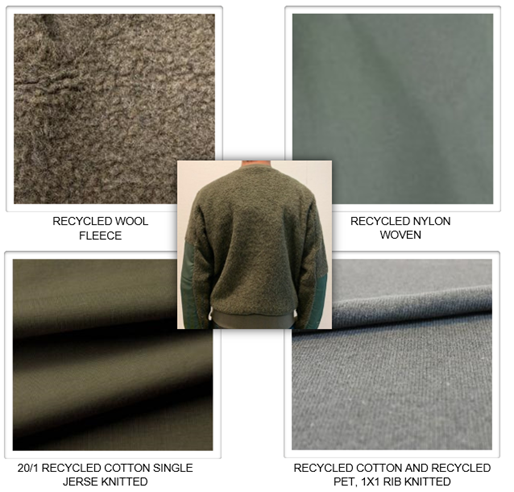Sustainable collection development towards greener future: Earthsavers
DOI:
https://doi.org/10.25367/cdatp.2022.3.p137-145Keywords:
sustainable, collection, fastness, sustainable fashion, recycled materialsAbstract
Nowadays, environmental awareness is more important not to damage the living environment. Sources of the Earth have been decreasing day by day due to many natural and human-induced reasons such as global warming, waste disposal, urbanization, deforestation, etc. Harm of the textile sector on the environment is high and it needs control and awareness. Raw material production, raw material selection, water usage amount, sustainability of processes, refining of wastes, recycle and reuse strategies of textile companies have a very significant effect on the environment. With this awareness, sustainable fashion is created because customer behaviors affect both design and production. In this view, all ingredients and processes turn to the most sustainable forms as much as possible. While being environmentally friendly, required performances of garments should be met to prepare the required end product. In this study, a sustainable collection whose name is Earthsavers is prepared by using recycled raw materials, natural dyestuffs, etc. Their physical and chemical performances are tested. Results of the collection are suitable for acceptance levels and it shows that a collection can be prepared with minimum harm to the environment with at least the same performances as conventional alternatives.
References
Brenot, A.; Chuffart, C.; Coste-Manière, I.; Deroche, M.; Godat, E.; Lemoine, L.; Ramchandani, M.; Sette, E.; Tornaire, C. Water Footprint in Fashion and Luxury Industry. In Water in Textiles and Fashion; Woodhead Publishing, 2019; pp. 95-113. DOI: https://doi.org/10.1016/B978-0-08-102633-5.00006-3.
De Falco, F.; Di Pace, E.; Cocca, M.; Avella, M. The Contribution of Washing Processes of Synthetic Clothes to Microplastic Pollution. Sci. Rep. 2019, 9, 6633. DOI: https://doi.org/10.1038/s41598-019-43023-x.
EEA. Textiles in Europe’s Circular Economy; 2019.
Ngan, S. P.; Ngan, S. L.; Lam, H. L. An Overview of Circular Economy-Life Cycle Assessment Framework. Chem. Eng. Trans. 2021, 88, 1123-1128. DOI: https://doi.org/10.3303/CET2188187.
European Parliament. A European Green Deal.
Kumar, R. Prospects of Sustainable Fashion Design Innovation. Int. J. Text. Fash. Technol. 2017, 7(6), 5-14. DOI: https://doi.org/10.24247/ijtftdec20172.
Henninger, C. E.; Alevizou, P. J.; Oates, C. J. What Is Sustainable Fashion? J. Fash. Mark. Manag. 2016, 20(4), 400-416. DOI: https://doi.org/10.1108/JFMM-07-2015-0052/FULL/PDF.
Mukendi, A.; Davies, I.; Glozer, S.; McDonagh, P. Sustainable Fashion: Current and Future Research Directions. Eur. J. Mark. 2020, 54(11), 2873-2909. DOI: https://doi.org/10.1108/EJM-02-2019-0132.

Downloads
Published
How to Cite
Issue
Section
License
Copyright (c) 2022 Tayfun Güven, Bahar Akarsu, Eray Sudaşdemir, Elçin Emekdar, Hatice Acikgöz-Tufan, Umut Kivanc Sahin, Senem Kursun Bahadir

This work is licensed under a Creative Commons Attribution-NonCommercial-NoDerivatives 4.0 International License.





